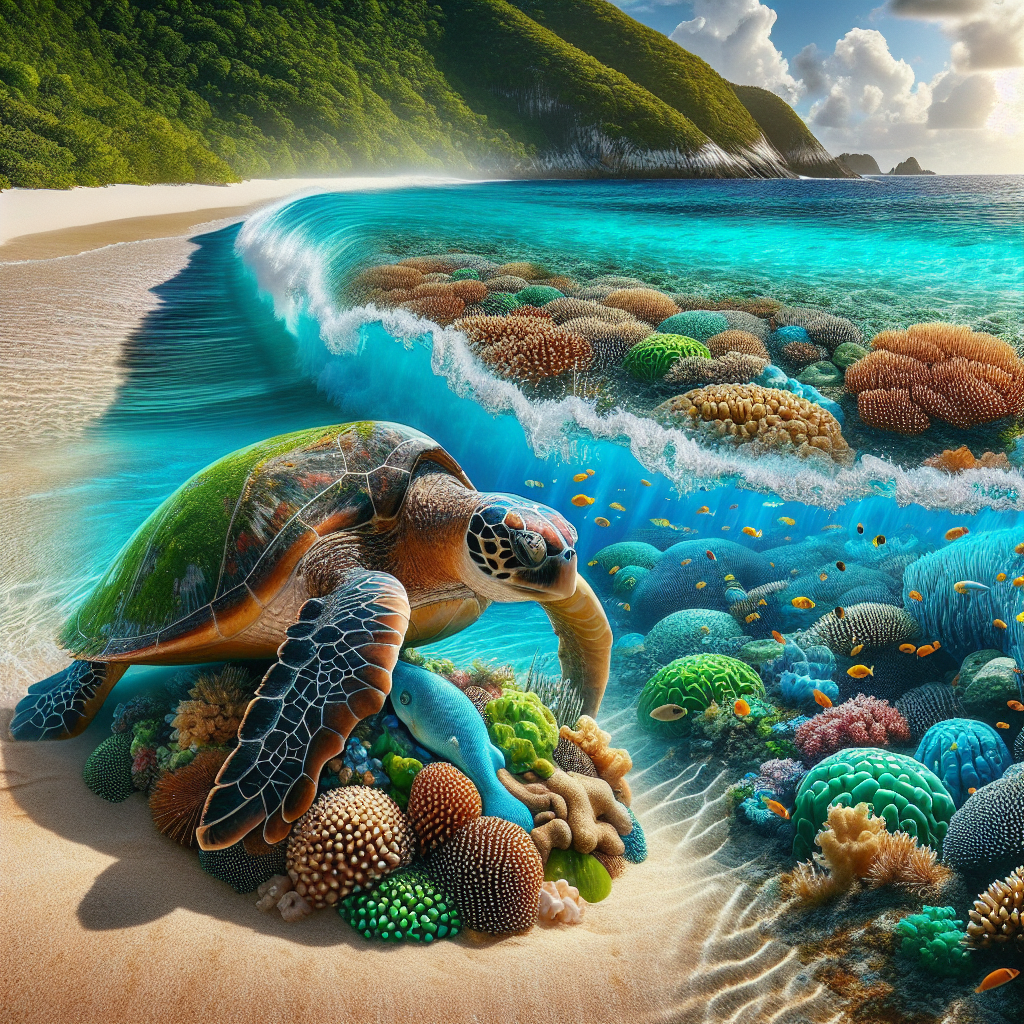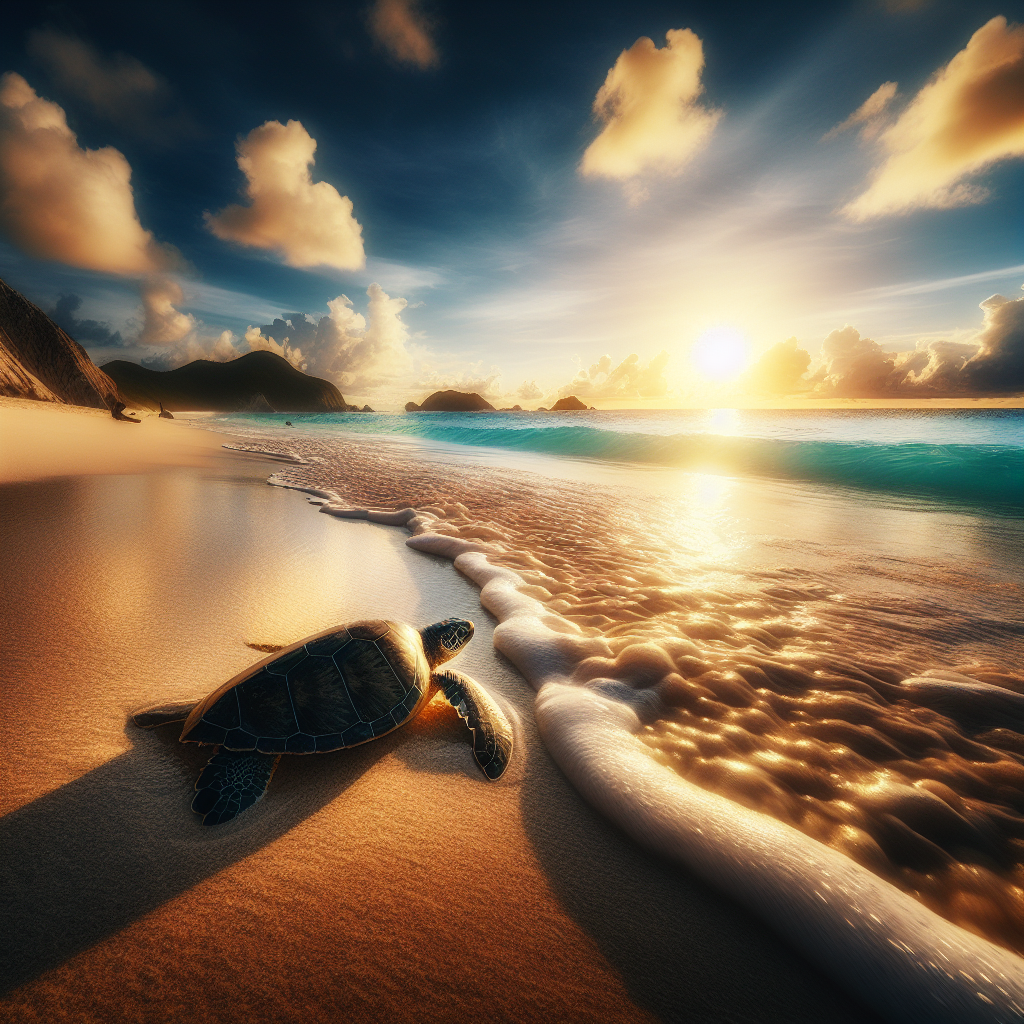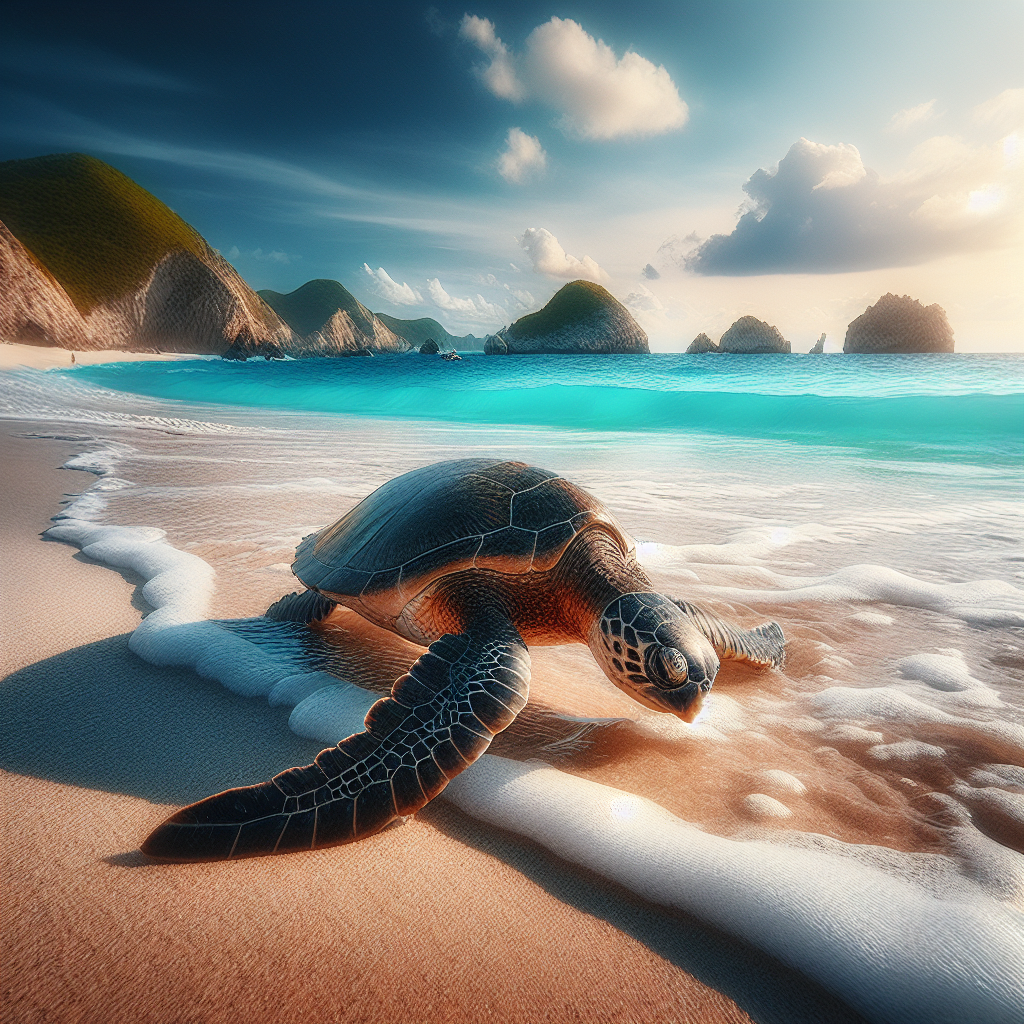Imagine strolling along the pristine beaches of Mexico, feeling the cool sea breeze on your face and the warm sand beneath your feet. Now, picture this tranquil scene teeming with vibrant wildlife – sea turtles gracefully navigating the waves, colorful birds soaring overhead, and playful dolphins dancing in the distance. In this captivating article, explore the breathtaking wildlife that calls Mexico’s beaches home, as seen through the eyes of a passionate conservationist. Discover the incredible diversity and conservation efforts in place to protect these precious ecosystems, and delve into fascinating topics such as sea turtle nesting habits, rare marine species, and the importance of sustainable tourism. Get ready to embark on a journey that will leave you with a newfound appreciation for the abundant wildlife found on Mexico’s enchanting coastlines.
Overview
Mexico’s beaches are not only known for their stunning natural beauty and vibrant culture but also for the diverse wildlife that call these coastal areas home. From rich marine life to ancient sea turtles, migratory birds, and vital ecosystems like mangroves and estuaries, there is an abundance of wildlife to explore and protect. However, this natural paradise is not without its challenges. Human impacts, pollution, overfishing, and climate change pose significant threats to the delicate balance of these ecosystems. Thankfully, there are numerous conservation organizations and initiatives dedicated to protecting and preserving Mexico’s beach wildlife. In this article, we will delve into the beauty and importance of Mexico’s beach wildlife, the threats they face, and how individuals can contribute to their conservation efforts.
1. Introduction to Mexico’s Beaches
Geographical location
Mexico’s unique geographical location between the Pacific Ocean and the Caribbean Sea offers a diverse range of beach destinations. Stretching along 9,300 kilometers of coastline, Mexico boasts some of the most breathtaking beaches in the world.
Popular beach destinations
Mexico is home to renowned beach destinations such as Cancun, Playa del Carmen, Tulum, Puerto Vallarta, and Cabo San Lucas. These destinations attract millions of tourists each year, seeking sun, sand, and clear turquoise waters.
Importance of beaches for wildlife
Mexico’s beaches serve as crucial habitats for a wide variety of wildlife. These coastal ecosystems provide food, breeding grounds, and nesting sites, supporting the intricate web of life that thrives in and around the sandy shores.

2. Marine Life on Mexico’s Beaches
Rich biodiversity in the ocean
Mexico’s coastal waters are teeming with an impressive array of marine life. With its warm waters, the country hosts diverse species, including vibrant coral reefs, seagrass beds, and a plethora of fish and invertebrates.
Coral reefs and seagrass beds
Mexico’s coral reefs are among the most biologically diverse in the world. These colorful habitats support a wide range of marine species while protecting the coastline from erosion. Seagrass beds, found along the shallow coastal regions, provide essential feeding and breeding grounds for numerous marine organisms.
Fish species found in Mexican coastal waters
Mexican coastal waters are home to a vast number of fish species, including the vibrant Queen Angelfish, the iconic Clownfish, and the majestic Manta Ray. These fish species contribute to the ecological balance of the ocean and provide a source of sustenance for coastal communities.
Dolphins and whales along the coast
The coastal waters of Mexico are a highway for various dolphin and whale species. From the acrobatic Spinner Dolphins to the mighty Humpback Whales, these cetaceans provide awe-inspiring encounters and contribute to the overall biodiversity and health of the marine ecosystem.
3. Sea Turtles: Ancient Wonders of the Beaches
Overview of sea turtles
Sea turtles are ancient creatures that have roamed the oceans for millions of years. Mexico is home to several species of these fascinating reptiles, including the endangered Hawksbill, Leatherback, and Olive Ridley turtles.
Endangered species of sea turtles in Mexico
Mexico plays a vital role in the conservation of endangered sea turtle species. The Olive Ridley turtle, in particular, faces significant threats due to habitat loss, incidental capture in fishing gear, and illegal poaching.
Turtle nesting grounds and conservation efforts
Mexico’s beaches serve as critical nesting grounds for sea turtles. From the Pacific coast to the Yucatan Peninsula, these nesting sites are closely monitored and protected by dedicated conservation efforts, including measures to prevent disturbance and nest predation.
Hatching and migration of sea turtles
The hatching and subsequent migration of sea turtle hatchlings is a spectacle to behold. With a combination of instinct and celestial navigation, these tiny turtles embark on an arduous journey to the ocean, facing a myriad of challenges along the way. Conservation initiatives aim to ensure their safe passage and survival.

4. Shorebirds: A Haven for Migratory Birds
The importance of beaches for migratory birds
Mexico’s beaches provide crucial stopover points and wintering grounds for numerous migratory bird species. These avian travelers rely on the coastal habitats for resting, feeding, and breeding before continuing their long journeys.
Popular shorebird species found in Mexico
Mexico is home to a wide variety of shorebird species, including the elegant Red Knot, the lively Sandpipers, and the charismatic American Oystercatcher. These birds play a vital role in maintaining the health and balance of coastal ecosystems.
Threats to shorebirds and their habitats
Shorebirds face a range of threats, including habitat loss due to coastal development, disturbance from human activities, pollution, and climate change. These factors endanger the survival of these remarkable birds and their habitats.
Conservation projects for shorebirds
Conservation projects focused on shorebirds aim to protect their habitats, promote sustainable beach management practices, and raise awareness about the importance of these birds among local communities and visitors.
5. Mangroves and Estuaries: Vital Ecosystems
What are mangroves and estuaries?
Mangroves are dense forests of salt-tolerant trees and shrubs found in tropical and subtropical coastal areas, while estuaries are areas where freshwater and saltwater mix. Together, they form vital ecosystems that support a remarkable diversity of wildlife.
Biodiversity in mangrove forests
Mangrove forests are not only home to a myriad of plant and animal species but also serve as nursery areas for juvenile fish, providing a safe haven for them to grow before venturing into open waters. Their intricate root systems also protect coastal areas from erosion and storm damage.
Role of mangroves in protecting coastal areas
Mangroves act as natural barriers, protecting coastal communities from the devastating impacts of hurricanes, storm surges, and rising sea levels. Their extensive root systems help stabilize sediments, reducing shoreline erosion and flooding risks.
Conservation efforts for mangroves
Conservation initiatives focus on preserving and restoring mangrove ecosystems, including reforestation projects, managing human activities such as shrimp farming and urban development, and educating communities on the importance of these unique habitats.

6. Indigenous and Endemic Species on Mexican Beaches
Unique wildlife species found on Mexican beaches
Mexico is blessed with a rich diversity of indigenous and endemic species found along its beaches. These include the Cozumel Thrasher, Isla San Pedro Cactus, and Veracruz Banded Gecko, among others. These species are often found in specific regions and are culturally significant to local communities.
The cultural significance of indigenous species
Indigenous species hold significant cultural value for local communities, often featuring in their folklore, traditions, and artwork. The preservation of these species is not only important for biodiversity conservation but also for maintaining cultural heritage and identity.
Conservation initiatives for endemic species
Projects targeting endemic species focus on habitat preservation, wildlife research, and community engagement. These initiatives raise awareness about the unique biodiversity found on Mexico’s beaches and aim to ensure the long-term survival of these species.
7. Threats to Wildlife on Mexico’s Beaches
Human impacts on coastal ecosystems
Human activities, such as coastal development, pollution, and unsustainable tourism practices, pose significant threats to the delicate balance of Mexico’s beach ecosystems. The loss and degradation of habitats directly impact wildlife populations.
Pollution and plastic waste
The accumulation of plastic waste and pollution on Mexico’s beaches and in its oceans has detrimental effects on marine life. Sea turtles and other wildlife often mistake plastic debris for food, leading to ingestion and entanglement, which can be fatal.
Overfishing and destructive fishing practices
Overfishing and destructive fishing practices, such as bottom trawling, threaten the sustainability of fish stocks and disrupt the intricate food chains and ecosystems that depend on them.
Climate change and its effects on wildlife
Climate change, including rising sea levels, ocean acidification, and increased temperatures, poses a significant threat to beach wildlife. These changes can alter habitats, disrupt breeding patterns, and affect the availability of food resources, leading to population declines and ecological imbalances.

8. Conservation Organizations and Initiatives
Prominent conservation organizations working in Mexico
Mexico is home to numerous prominent conservation organizations dedicated to protecting beach wildlife. These organizations include Pronatura, Pro Peninsula, and the Mexican Fund for the Conservation of Nature, among others. Their work focuses on research, community engagement, and policy advocacy.
Projects and strategies for protecting beach wildlife
Conservation projects and strategies aim to protect and restore coastal habitats, implement sustainable fishing practices, reduce pollution, and educate local communities and tourists about the importance of wildlife conservation.
Community involvement in conservation efforts
Effective conservation relies on the active involvement of local communities. Many initiatives prioritize community engagement, providing economic opportunities through sustainable ecotourism practices and promoting awareness of the benefits of preserving beach wildlife for future generations.
10. Tips for Supporting Beach Wildlife Conservation
Reducing plastic use and recycling
Minimizing the use of single-use plastics and adopting recycling practices can help reduce the amount of plastic entering Mexico’s beaches and oceans, protecting marine wildlife from the harmful effects of pollution.
Participating in beach clean-up activities
Joining beach clean-up activities organized by local conservation organizations or contributing to regular clean-ups when visiting the beach can help remove harmful debris and preserve the beauty of these coastal ecosystems.
Supporting local businesses committed to sustainability
Choose to support local businesses that prioritize sustainability and wildlife conservation initiatives. This can include staying at eco-friendly accommodations, purchasing locally sourced products, and supporting businesses that follow responsible tourism practices.
Educating others about the importance of wildlife conservation
Share knowledge about the importance of beach wildlife conservation with friends, family, and fellow travelers. Encourage others to adopt sustainable practices and make informed choices that contribute to the protection of these vital ecosystems.
In conclusion, Mexico’s beaches are not only a paradise for tourists but also an essential habitat for a diverse array of wildlife. From sea turtles and migratory birds to mangroves and endemic species, these coastal ecosystems are teeming with life. However, they face numerous threats that require immediate attention and action. By understanding the value of Mexico’s beach wildlife and actively engaging in conservation efforts, we can all contribute to the preservation of these precious habitats and ensure a sustainable future for generations to come.
